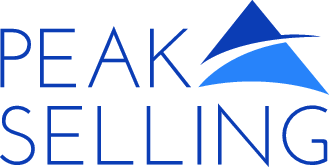Writing RFPs That Will Win More Sales - Announcing a New STAR Workshop
Posted on 04/01/2010 in Sales Management
"Use the RFP process to create your own edge over the incumbent.” -Wayne Thomas,The Sales Manager's Success Manual, 2008
Sales Training And Results, Inc. (STAR) is excited to announce a new workshop titled Writing a Winning RFP. This workshop teaches the skills and concepts on how to write a customized Request For Proposal (RFP) that will increase your likelihood of winning more business. The workshop highlights critical success factors that should be addressed when you respond to RFPs, as well as common mistakes such as writing RFPs that are too lengthy and not client-focused.
This month’s newsletter will summarize some of the critical success factors for RFPs. Next month’s newsletter will address the most common mistakes.
What Are the Three Most Critical Success Factors When Writing RFPs?
There are many contributing factors that determine the success of an RFP, but the three most important success factors can be summarized by these questions:
- How can you write the most powerful executive overview?
- How can you set your company, service/product, and yourself apart?
- What information should you include, and what should you purposely leave out?
Let’s talk briefly about each of these three success factors.
The executive overview or the opening is a crucial section of the RFP. Many sales professionals don’t realize how important the opening section of the RFP can be. The opening is when the customer is likely to be most attentive. Anything you write in the opening is most likely to be remembered by the customer, and can make a huge difference in terms of your success rate in winning more RFPs. Many decision makers will only read the executive overview, and will ignore the rest of your RFP.
Because the opening is so important, we provide tips and guidelines about what to write and how to write it, so that you can capture the customer’s attention and communicate your message clearly and concisely. For example, add a statement that quantifies what your product/service can do for this customer such as, "Our proposal will demonstrate how you can improve your process by 20% or more, which generates at least $250,000 per year in savings."
The second success factor is to set yourself apart. You need to do this in the opening and throughout the entire RFP. Strive to answer these two questions to the best of your ability: What differentiates you from other providers or suppliers? How can you demonstrate to the customer that you will address their most critical issues? This sounds obvious, but many RFPs don’t provide any compelling differentiators. There are numerous opportunities throughout the RFP to demonstrate to the customer why they should select you. State your differentiators as concisely as possible, for example, "The breadth and depth of our offerings allows you to reduce the number of your suppliers."
The third and final success factor is to be selective about the information that you include in your RFP. Again, this may sound obvious, but be sure to include only the information the customer has asked for and respond specifically to the customer’s needs. Many sellers believe that the best RFPs are informational. We disagree. A common mistake is to write RFPs that are too lengthy. The best RFPs must be persuasive. You should purposely include only the most relevant information. If you’ve done your homework by talking to the customer prior to writing the proposal it should be clear what to include and what to leave out. A good rule of thumb is "…if in doubt, leave it out.”
For more details visit our Writing a Winning RFP workshop page.. Anyone who participates in the RFP process will benefit from this workshop, including sales professionals, managers, sales support personnel, and marketing. STAR can also provide coaching to individuals who wish to improve their ability to write and respond to RFPs.
